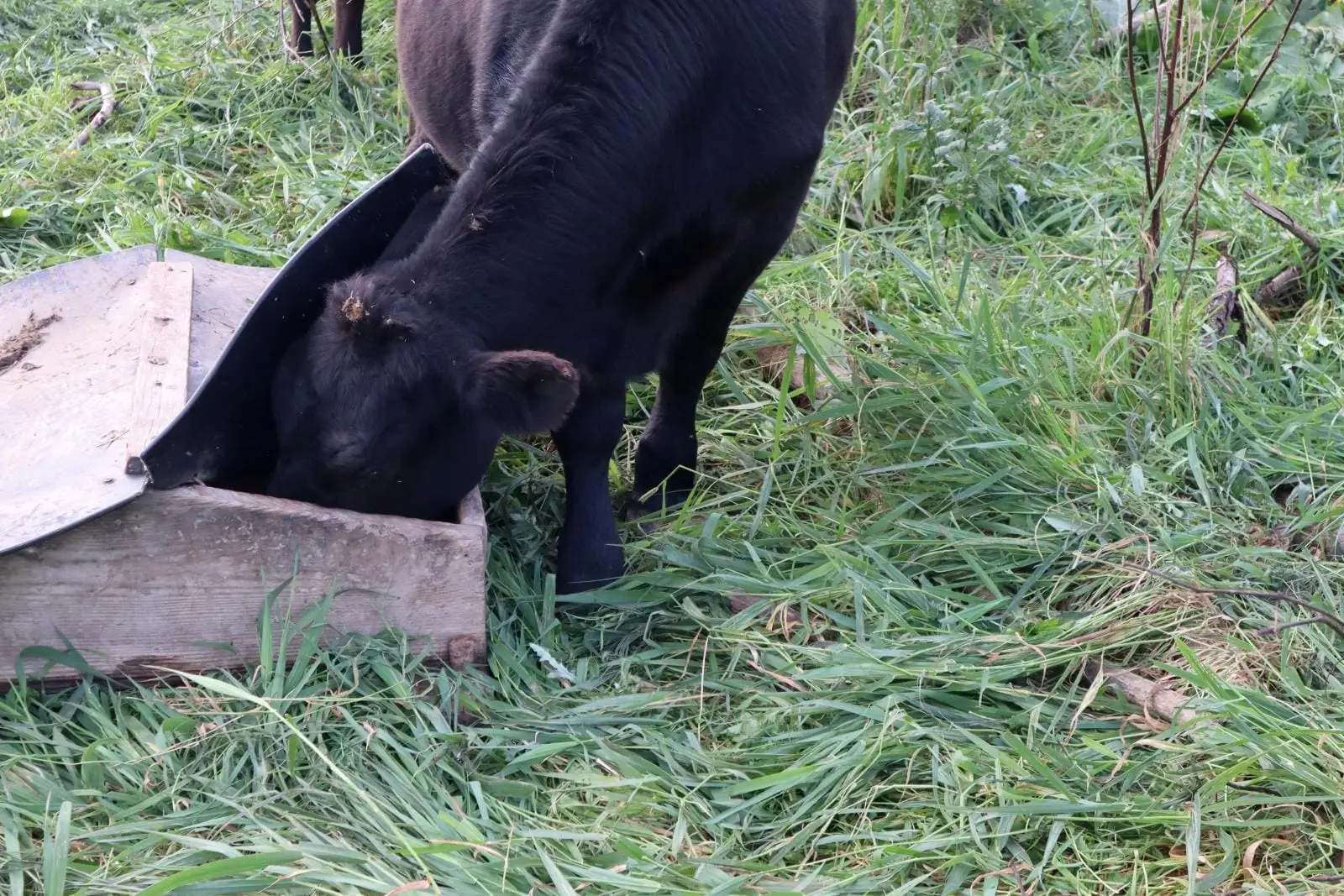Discussions of large animal herds moving across landscapes typically describe the migrations in terms of the availability of food and water and the avoidance of predators. But there is another, often overlooked factor, in overland migration patterns: the search for salt.
Our part of New York is dotted with natural mineral springs. We’re just a few miles from the once-popular spa town of Sharon Springs with its sulfur springs. And a few miles in the other direction lies a hamlet named Salt Springville. In a completely natural setting, wild herbivores find these springs and use them as mineral supplements for their diet. Sodium, calcium, phosphorus, and sulfur are the most critical minerals they’d be craving, at least in our area. They also benefit from trace amounts of selenium and copper.
Our farm is located on the eastern edge of the historical range for North American bison. Although the writings from the time of the first European incursions describe this area as heavily wooded in old growth timber, there are some indications that going a few hundred years further back in time this place was once more open with meadows and grasslands on the lowland slopes and river valleys. I’m always fascinated to think of bison herds moving across meadows and crashing through the woods right here. It is impossible to know, but perhaps our farm was once a segment in their migratory path between mineral springs.
In creating a farm that models itself on natural animal behaviors, there are of course some accommodations we must make for practicality. We use cows as analogs to bison, filling the role of the large grass fed herbivore species for our landscape. But our property doesn’t include any natural salt licks. We can’t have our cattle herd migrating five miles across other farms, neighborhoods, and a state highway to visit a natural salt lick. So we provide a mineral salt lick for them.

I built this mineral feeder eight years ago, and frankly, I’m surprised that it is still intact. We drag it along with the four wheeler through mud, ice, tall grass, and rocks. Cattle rub their necks on the sides and lick salt out of it. It has endured a hard life but somehow this little feeder survives. The top is covered with flaps made of heavy mining grade conveyor belts. This helps to shed most of the rain and snow to keep the salt loose. Loose salt is easier to lick compared to salt that has solidified into a block.
We have been using a salt mix from Redmond Salt in Utah. This is a pink salt, apparently the only pink salt found in North America. Deposited from the remnants of the Jurassic Sundance Sea, it provides a tremendous array of trace minerals and mineral clays along with the main ingredient sodium chloride. The company packages this same salt in a more finely milled format, sold in grocery stores under the brand name Real Salt. We have tried using this livestock-grade salt as table salt, but found it to be too coarse and gritty. But I still use it every year to brine a pig for our family’s pig roast.
Mineralized salt provides the cattle the necessary building blocks to support their physical functions. As with human health, it is becoming increasingly apparent that mineral deficiencies are implicated in all kinds of health problems. Running short on certain minerals create imbalances that lead to the body fall behind on important biological processes such as immune system function, bone growth, reproduction, and cognitive development.
Salt itself has been demonized in human diets, but nutritionists are reluctantly coming around to the realization that salt avoidance, like fat avoidance, was an ill-conceived idea. Not that it stops the medical community from continuing to blame sodium for the problems created by stressful lifestyles, starchy processed junk food, and self inflicted physical lassitude… But cows, bison, and deer have known all along that abundant salt is fundamental to a healthy life. Just give them grass and water, served with a dash of salt, and they’re all set.
